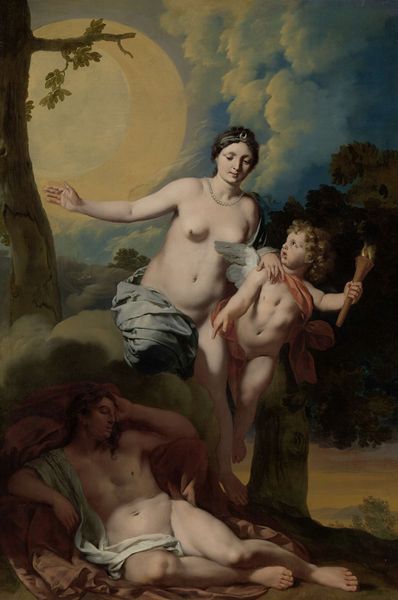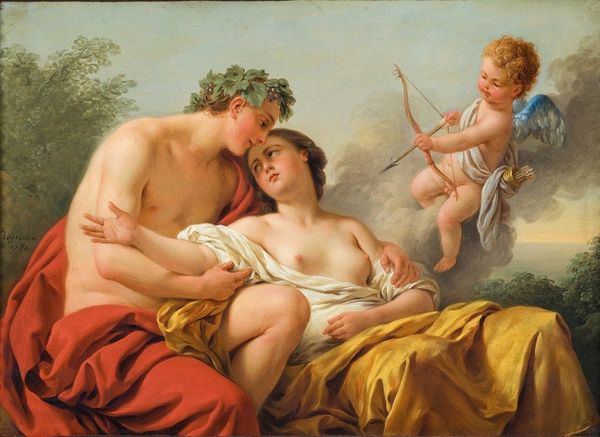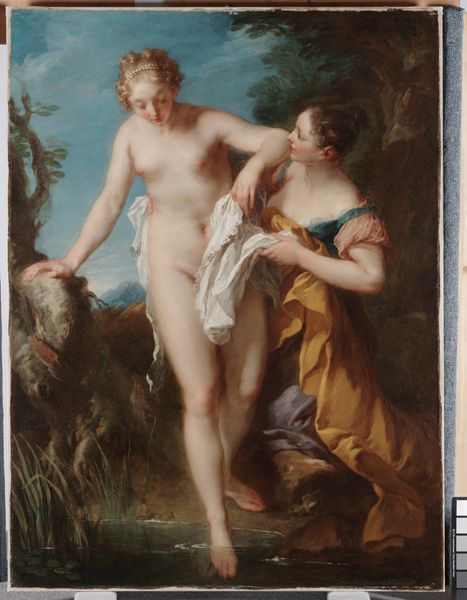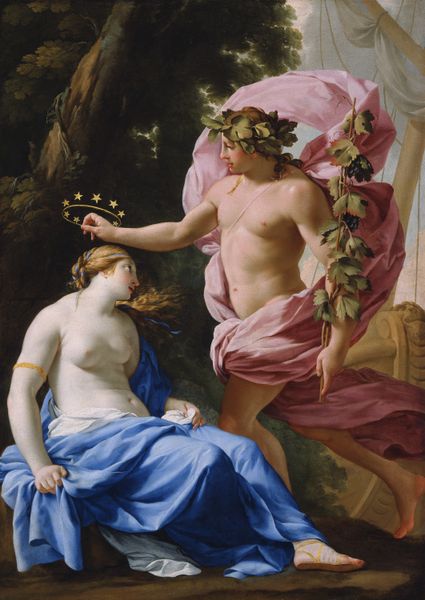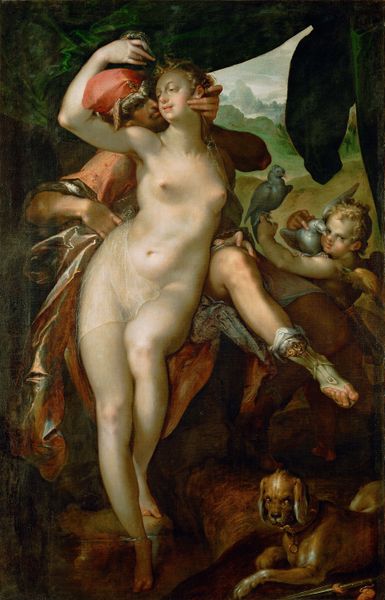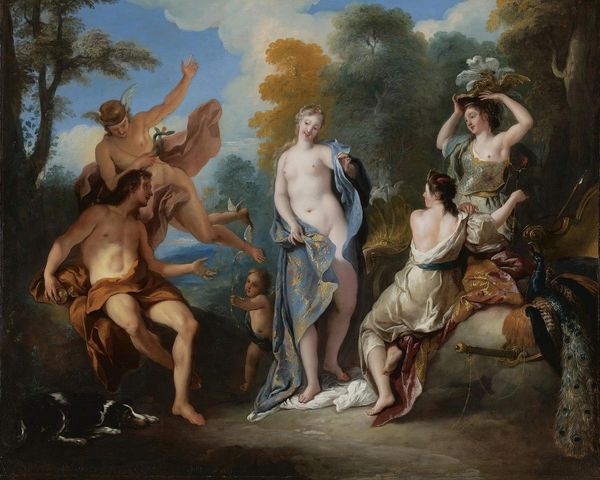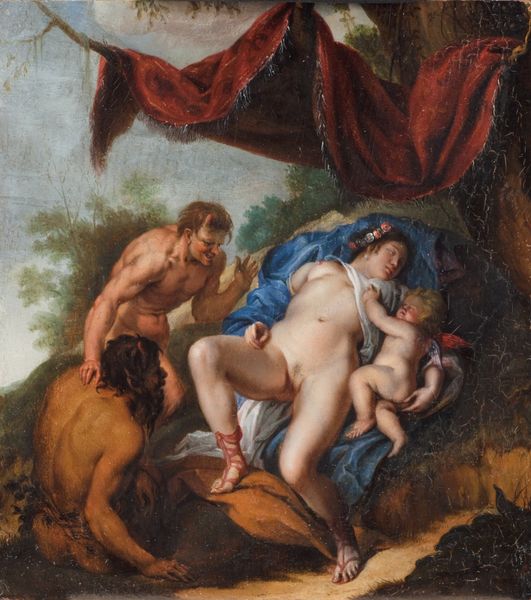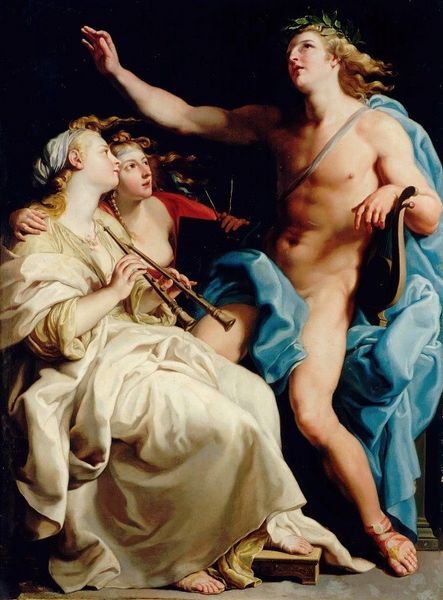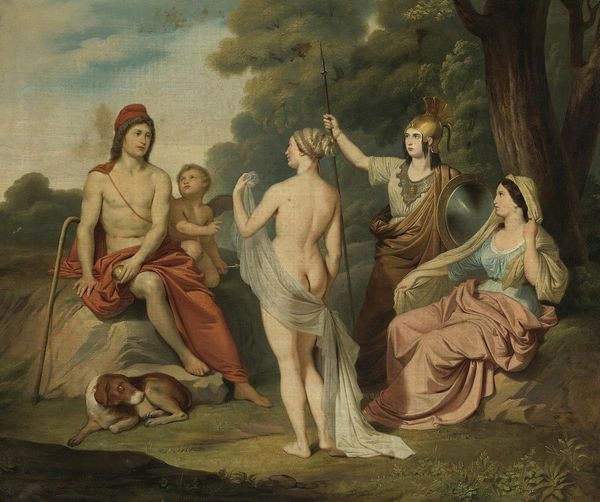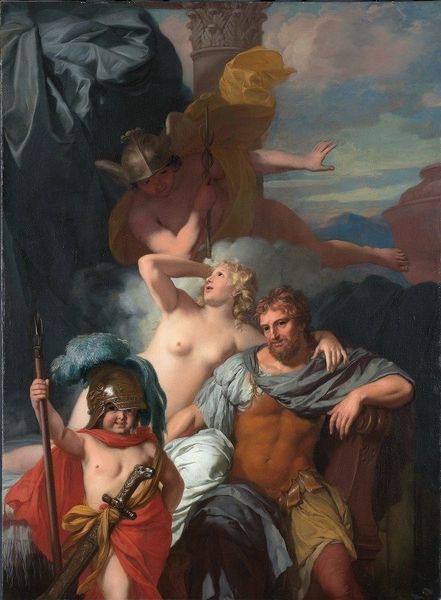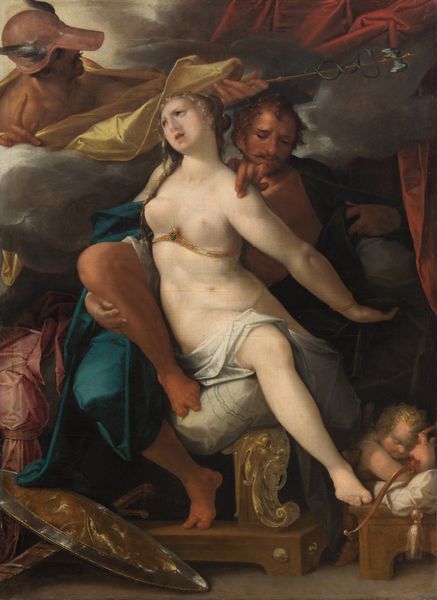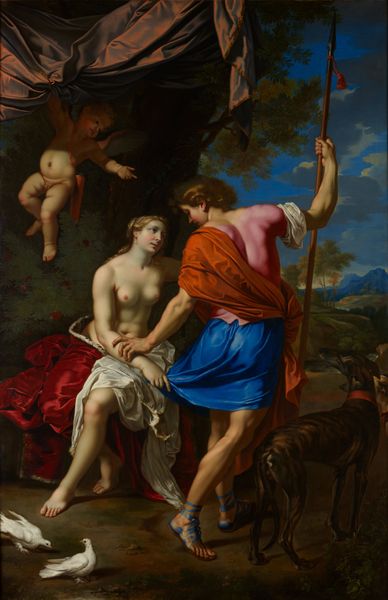
Dimensions: height 125 cm, width 94 cm
Copyright: Rijks Museum: Open Domain
Editor: So here we have Gerard de Lairesse’s *Odysseus and Calypso* from around 1680. It's an oil painting that really strikes me with its blend of classical imagery and... almost a domestic intimacy. What do you see in this piece, beyond just the mythological narrative? Curator: I see a very deliberate construction of power, negotiated through the visual language of the time. Lairesse is working within a specific artistic and social context, where art serves to reinforce certain values and ideas. The choice to depict this particular scene, and to depict it in this manner, wasn't arbitrary. What do you notice about how Calypso is presented? Editor: Well, she’s in a state of undress, and she's kind of...confidently posed. She's the one with the spear, seemingly more powerful, yet...vulnerable? How would contemporary viewers interpret that? Curator: Precisely! This gets to the politics of imagery. Nudity here signifies both vulnerability and allure. Calypso, as a goddess, possesses a kind of power, but her near-nudity also places her within a male gaze, softening that power for the largely male viewership of the time. Odysseus, even though he’s leaving, is portrayed with strength. And the cupid there sort of romanticizes what might really be seen as kidnapping. These images normalize power dynamics and certain societal structures. Editor: So, even a mythological painting like this is deeply connected to the social and political realities of the 17th century. That's a new way to consider it for me. Curator: Absolutely. Art doesn't exist in a vacuum. Lairesse's choices reflect the values and power structures of his time, making it more than just an illustration of a myth, it is a document of cultural beliefs. Editor: That's a really important distinction, viewing it as a historical artifact reflecting cultural norms. Curator: Indeed! It makes us consider what it says about the audience that consumed and appreciated art. Hopefully that encourages everyone listening to look critically at art, what they represent, and what political statements they embody.
Comments
rijksmuseum about 2 years ago
⋮
The Greek poet Homer recounts how the heroic warrior Odysseus found refuge on the island of the nymph Calypso. The Trojan War is over: Amor, the god of love, now teasingly places the battle helmet on Calypso’s head. Odysseus and Calypso instantly fall in love. This painting hung in the Soestdijk hunting lodge, in the apartment of Mary Stuart, the consort of William III.
Join the conversation
Join millions of artists and users on Artera today and experience the ultimate creative platform.
